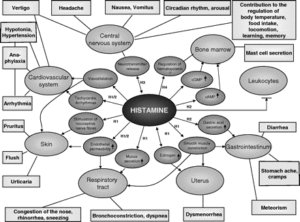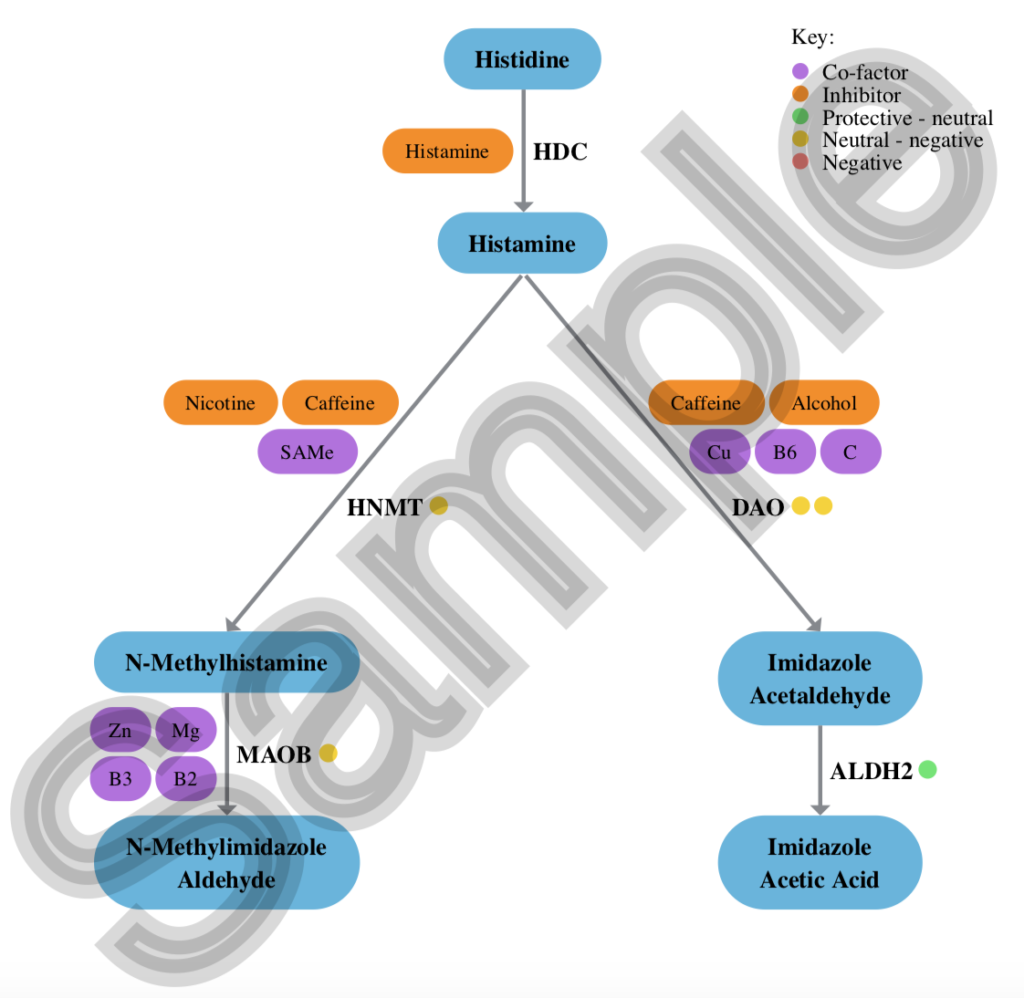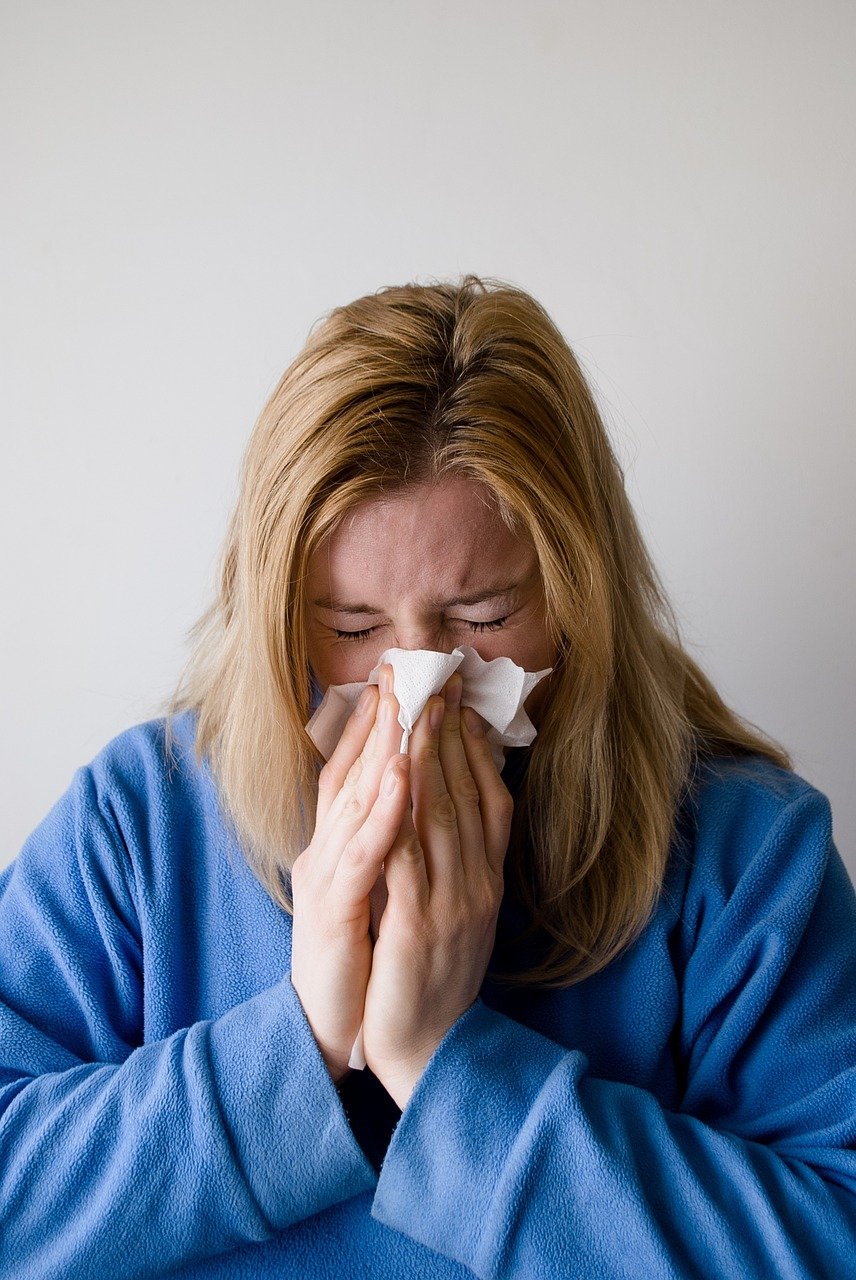Another blog article I am currently working on (as of 22.04.20) which I will update, and improve upon over the coming days/weeks. This one is on histamine intolerance.
What Is Histamine?
Histamine is an important immune mediator, involved in the immune and inflammatory response, that causes vasodilation (the widening of blood vessels) and increased vascular permeability and may even contribute to anaphylactic reactions.
It is involved in local immune responses, as well as regulating physiological function in the gut and acting as a neurotransmitter for the brain, spinal cord, and uterus.
As part of an immune response to foreign pathogens (a bacterium, virus, or other microorganism that can cause disease), it is produced by immune cells called basophils and mast cells. It increases the permeability of the capillaries to white blood cells and some proteins, to allow them to engage pathogens in the infected tissues.
It plays a central role in the pathogenesis of several allergic diseases, such as atopic dermatitis, allergic rhinitis, and allergic asthma
What Is Histamine Intolerance (H.I)?
H.I results from a disequilibrium of accumulated histamine and the capacity for histamine degradation.
In healthy persons, dietary histamine can be rapidly detoxified by amine oxidases, whereas persons with low amine oxidase activity are at risk of histamine toxicity. Diamine oxidase (DAO) is the main enzyme for the metabolism of ingested hist.. The the other important enzyme inactivating hist., called histamine-N-methyltransferase, can convert histamine only in the intracellular space of (inside) cells.
The existence of H.I has been underestimated
Approximately 1% of the population has HI, and 80% of those patients are middle-aged. Because of the multifaceted symptoms, the existence of HI is frequently underestimated, or its symptoms are misinterpreted. Clinical symptoms and their provocation by certain foods and beverages appear similar in different diseases, such as food allergy and intolerance of sulfites, hist., or other biogenic amines (eg, tyramine). Therefore, the differentiation of the causal agent in adverse reactions to food, alcohol, and drugs is a difficult challenge.
What Are The Symptoms Of High Histamine?

Maintz & Novak (2007) Histamine and histamine intolerance
Histamine excess may cause numerous symptoms mimicking an allergic reaction.
So symptoms may include:
Diarrhoea, abdominal pain, leaky gut, abdominal cramps, headache/migraine, rhinoconjunctival symptoms, asthma, low blood pressure, arrhythmia, urticaria, pruritus, flushing, congestion of the nose, asthmatic wheezing, insomnia, vomiting, nausea, itching, vertigo, dysmenorrhea
What Foods Are High In Histamine?
- Alcohol
- Pickled or canned foods – sauerkrauts
- Matured cheeses
- Smoked meat products – salami, ham, sausages….
- Shellfish
- Beans and pulses – chickpeas, soy beans, peanuts
- Nuts – walnuts, cashew nuts
- Chocolates and other cocoa based products
- Vinegar
- Ready meals
- Salty snacks, sweets with preservatives and artificial colourings
Histamine liberators:
- Most citric fruits – kiwi, lemon, lime, pineapple, plums…
- Cocoa and chocolate
- Nuts
- Papaya
- Beans and pulses
- Tomatoes
- Wheat germ
- Additives – benzoate, sulphites, nitrites, glutamate, food dyes
Diamine Oxidase (DAO) blockers:
- Alcohol
- Black tea
- Energy drinks
- Green tea
- Mate tea
What Causes Histamine Intolerance?
Several host factors, in addition to genetic factors, may influence hist., and, hist. receptor effects, including the microbiota, gender, ageing, autoimmune diseases, inflammatory skin, cancer, gut, and pulmonary diseases.
Understanding what foods are higher in hist. may be helpful but the real question is why do you have an issue in the first place?
One of the most common reasons may be related to gut health.
I see a lot of people with SIBO (small intestine bacterial overgrowth), and, a lot of people with imbalances in their large intestines suffer with hist. issues. This might be related to an overgrowth of histamine producing bacteria.
You may like to read my article on SIBO: click here.
I also see a lot of people with mycotoxin issues suffer with histamine issues. You can learn more about mycotoxins by reading my blog The Ultimate Guide To Mycotoxins.
The DAO enzyme is responsible in breaking down histamine (as can be seen in the below visual). This can be tested via LAB4MORE, available in the UK from Regenerus Labs.
As seen in the below image, Vitamin B6 is essential in the metabolism of histamine, as is vitamin C and copper.
How Do I Reduce Histamine Levels?
In patients in whom the above mentioned symptoms are triggered by the corresponding foods, and, who have a negative diagnosis of allergy or internal disorders, HI should be considered as an underlying pathomechanism.
So what to do?
- Reduce intake (see food list)
- Improve gut health – deal with any infections or SIBO (small intestine bacterial overgrowth)
- Manage stress
- Support metabolism/breakdown of hist.

Sample of the histamine report from Lifecode GX.
Best Natural Antihistamines
The main nutrients to consider include: quercetin, nettle, vitamin C, black cumin seed oil. These are some of my favourite products:
- Histamin X by Seeking Health
- Probiota Histamin X by Seeking Health (a probiotic that doesn’t contain hist. producing organisms)
- Culturelle – a probiotic that may help degrade hist.
- Quercetin
- Vitamin C
- DAO enzymes
Another product, which seems less well known is Palmitoylethanolamide (PEA). Check out my blog all about PEA for more information.
Receive 10% off the cost of these products at Amrita Nutrition by mentioning me during check out (alex manos).
References
Maintz & Novak (2007) Histamine and H.I: click here.
A Histamine-Free Diet Is Helpful for Treatment of Adult Patients with Chronic Spontaneous Urticaria: click here.
Branco et al., (2018) Role of Hist. in Modulating the Immune Response and Inflammation (click here)
Thangham (2018) The Role of Hist. and Hist. Receptors in Mast Cell-Mediated Allergy and inflammation: The Hunt for new Therapeutic Targets (click here)
Lieberman (2011) The basics of hist. biology: click here
Fromm (1978) Gastric mucosal defense mechanisms: effects of salicylate and hist.: click here
Schink et al., (2018) Microbial patterns in patients with H.I: click here.
Schnedl et al., (2018) Non-celiac gluten sensitivity: people without celiac disease avoiding gluten-is it due to histamine intolerance? Click here
Manzotti et al., (2016) Serum diamine oxidase activity in patients with H.I.: click here
Kovacova-Hanuskova et al., (2015) Histamine, histamine intoxication and intolerance: click here
Kohn 2014 Is there a diet for histamine intolerance?: click here
Schnedl et al., (2019) Evaluation of symptoms and symptom combinations in H.I: click here.
Lackner et al., (2019) Hist.-reduced diet and increase of serum diamine oxidase correlating to diet compliance in histamine intolerance: click here.
Sánchez-Pérez et al., (2018) Biogenic Amines in Plant-Origin Foods: Are They Frequently Underestimated in Low-Histamine Diets?: click here.
Schnedl et al., (2019) Diamine oxidase supplementation improves symptoms in patients with H.I: click here.
Alex is a certified Functional Medicine Practitioner (IFMCP) and has a MSc in Personalised Nutrition. He is also a breathwork facilitator with a background in personal training and massage therapy. He also runs The Resiliency Program - a 24 week program aimed at building physical, mental, emotional, and spiritual resilience.



